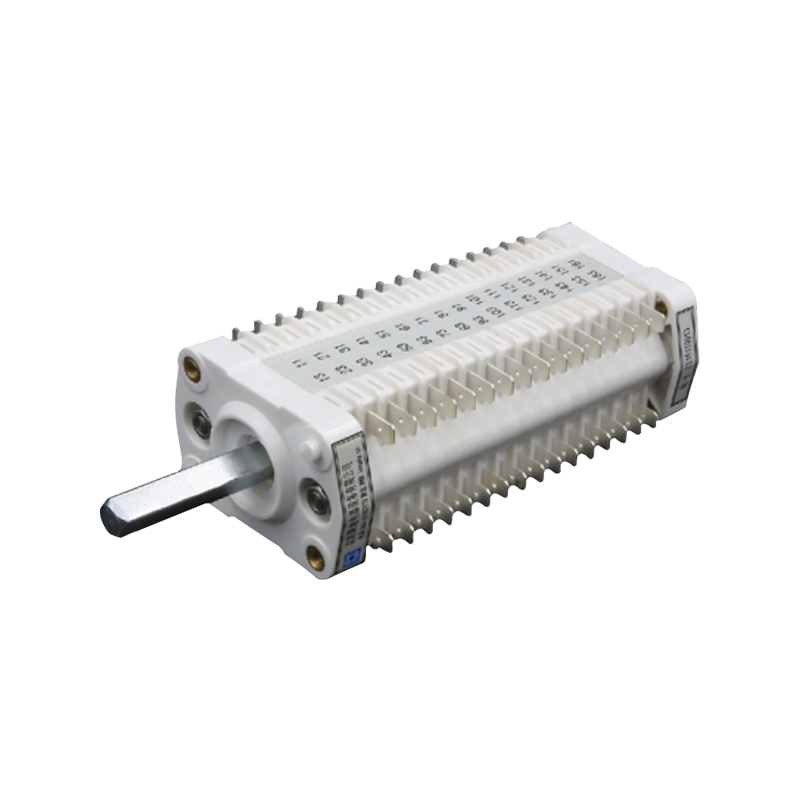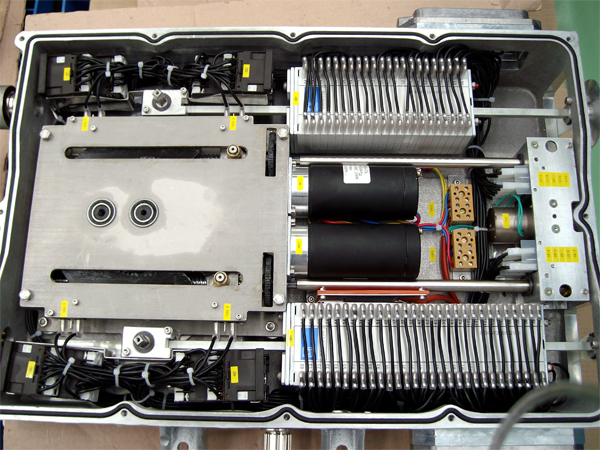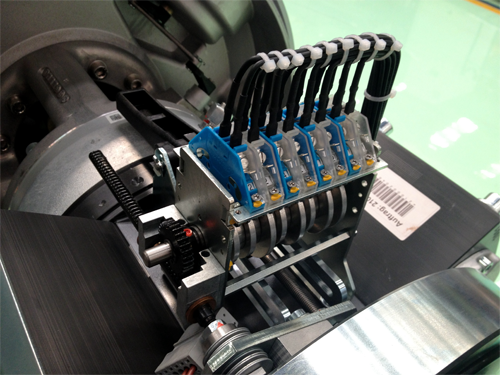

Synergistic operation of auxiliary switches and high-voltage circuit breakers
Release time:2024-07-24
In a power system, the high voltage circuit breaker is not only the core device for controlling and protecting the circuit, but it also carries an auxiliary switch, a key technical component. This combination is the key to realizing the efficient and safe operation of the power system. By exploring in detail the working mechanism of auxiliary switches and high-voltage circuit breakers, we can gain a deeper understanding of their application and importance in power systems.

Functional Analysis and Working Principle
1. Basic Function and Composition
Auxiliary switches, as an important part of high-voltage circuit breakers, are mainly responsible for realizing the secondary control of the circuit, including the control of breaking and closing signals, as well as interlocking protection, etc. These switches are not directly involved in the main circuit.
These switches are not directly involved in the opening and closing of the main circuit, but indirectly affect the state of the main switch through the control loop, thus realizing the fine regulation of the power system.
2. Interaction mechanism between circuit breakers and auxiliary switches
The auxiliary switch is connected to the main shaft of the circuit breaker through its contact system. When the circuit breaker performs the opening or closing operation, the shaft of the auxiliary switch is also acted accordingly, and the corresponding contacts will be opened and closed in accordance with the set logic to realize the state switching.
This mechanical linkage ensures that the auxiliary switch can accurately reflect the state of the circuit breaker and provide correct signals for the control system.

3. Control and protection functions
With the help of the auxiliary switch, the control system can automatically execute a series of protection measures according to the real-time state of the circuit breaker, such as quickly disconnecting the faulty circuit, effectively preventing the expansion of the accident.
In addition, the auxiliary switch can also realize remote monitoring and diagnosis of the circuit, and improve the intelligent level of the power system.

Technical Characteristics and Application Advantages
1. Technical features
Auxiliary switches are designed with diversified contact configurations, which can be adapted to different control requirements, and their structure design is compact and easy to install and maintain.
The auxiliary switches are highly reliable and can work stably in various harsh environments, which is crucial to ensure the continuous operation of the power system.
2. Application advantages
High-voltage circuit breakers combined with auxiliary switches are able to realize more complex protection strategies, such as sequential control, timing operation, etc., which enhances the flexibility and accuracy of power system management.
The introduction of auxiliary switches makes the operation of HV circuit breakers safer and more reliable, especially in remote control and automation management, which significantly improves the overall efficiency and safety of the system.
Challenges and Development Direction
1. Environmental adaptability
Although auxiliary switches are designed to adapt to a wide range of environmental conditions, extreme weather and geographic conditions can still affect their performance, requiring manufacturers to continuously optimize their designs to improve the environmental adaptability of their products.
2. Technology Updates
As power systems evolve towards smart grids, auxiliary switches need to be continuously updated to meet higher levels of integration and intelligence.
3. Cost and Maintenance
Although auxiliary switches improve system reliability, the initial investment and maintenance costs increase accordingly. Finding more cost-effective design solutions will be one of the focuses of future development.

Conclusion and Outlook
Auxiliary switches not only enhance the functionality of high-voltage circuit breakers, but also significantly improve the safety and reliability of power systems. The continuous development of this technology is expected to further promote the power system towards automation and intelligence, providing a solid guarantee for the stability and security of future power supply. With the continuous progress of the technology, auxiliary switches are expected to play a greater role in the future power system, contributing more power to global power security.

Functional Analysis and Working Principle
1. Basic Function and Composition
Auxiliary switches, as an important part of high-voltage circuit breakers, are mainly responsible for realizing the secondary control of the circuit, including the control of breaking and closing signals, as well as interlocking protection, etc. These switches are not directly involved in the main circuit.
These switches are not directly involved in the opening and closing of the main circuit, but indirectly affect the state of the main switch through the control loop, thus realizing the fine regulation of the power system.
2. Interaction mechanism between circuit breakers and auxiliary switches
The auxiliary switch is connected to the main shaft of the circuit breaker through its contact system. When the circuit breaker performs the opening or closing operation, the shaft of the auxiliary switch is also acted accordingly, and the corresponding contacts will be opened and closed in accordance with the set logic to realize the state switching.
This mechanical linkage ensures that the auxiliary switch can accurately reflect the state of the circuit breaker and provide correct signals for the control system.

3. Control and protection functions
With the help of the auxiliary switch, the control system can automatically execute a series of protection measures according to the real-time state of the circuit breaker, such as quickly disconnecting the faulty circuit, effectively preventing the expansion of the accident.
In addition, the auxiliary switch can also realize remote monitoring and diagnosis of the circuit, and improve the intelligent level of the power system.

Technical Characteristics and Application Advantages
1. Technical features
Auxiliary switches are designed with diversified contact configurations, which can be adapted to different control requirements, and their structure design is compact and easy to install and maintain.
The auxiliary switches are highly reliable and can work stably in various harsh environments, which is crucial to ensure the continuous operation of the power system.
2. Application advantages
High-voltage circuit breakers combined with auxiliary switches are able to realize more complex protection strategies, such as sequential control, timing operation, etc., which enhances the flexibility and accuracy of power system management.
The introduction of auxiliary switches makes the operation of HV circuit breakers safer and more reliable, especially in remote control and automation management, which significantly improves the overall efficiency and safety of the system.
Challenges and Development Direction
1. Environmental adaptability
Although auxiliary switches are designed to adapt to a wide range of environmental conditions, extreme weather and geographic conditions can still affect their performance, requiring manufacturers to continuously optimize their designs to improve the environmental adaptability of their products.
2. Technology Updates
As power systems evolve towards smart grids, auxiliary switches need to be continuously updated to meet higher levels of integration and intelligence.
3. Cost and Maintenance
Although auxiliary switches improve system reliability, the initial investment and maintenance costs increase accordingly. Finding more cost-effective design solutions will be one of the focuses of future development.

Conclusion and Outlook
Auxiliary switches not only enhance the functionality of high-voltage circuit breakers, but also significantly improve the safety and reliability of power systems. The continuous development of this technology is expected to further promote the power system towards automation and intelligence, providing a solid guarantee for the stability and security of future power supply. With the continuous progress of the technology, auxiliary switches are expected to play a greater role in the future power system, contributing more power to global power security.
